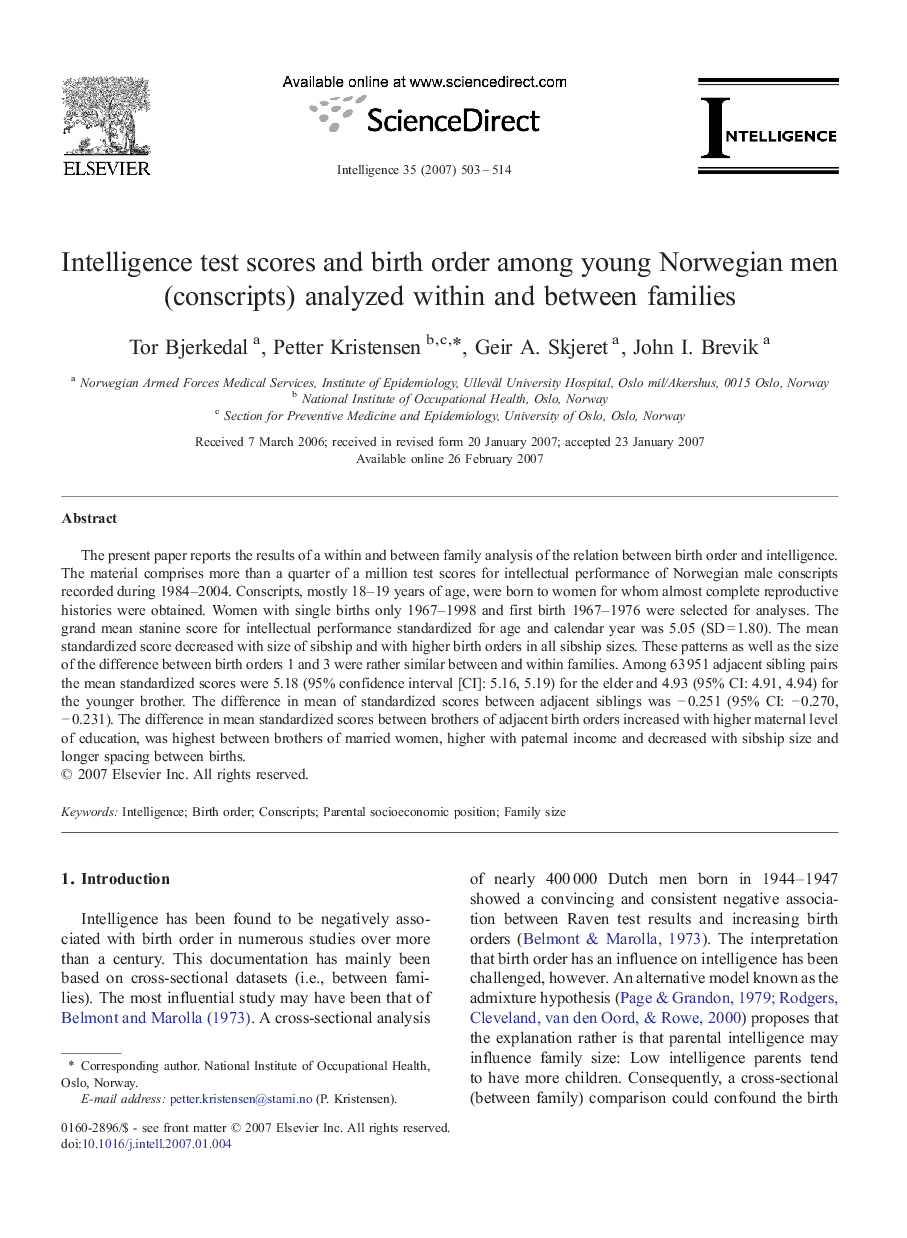| Article ID | Journal | Published Year | Pages | File Type |
|---|---|---|---|---|
| 929569 | Intelligence | 2007 | 12 Pages |
The present paper reports the results of a within and between family analysis of the relation between birth order and intelligence. The material comprises more than a quarter of a million test scores for intellectual performance of Norwegian male conscripts recorded during 1984–2004. Conscripts, mostly 18–19 years of age, were born to women for whom almost complete reproductive histories were obtained. Women with single births only 1967–1998 and first birth 1967–1976 were selected for analyses. The grand mean stanine score for intellectual performance standardized for age and calendar year was 5.05 (SD = 1.80). The mean standardized score decreased with size of sibship and with higher birth orders in all sibship sizes. These patterns as well as the size of the difference between birth orders 1 and 3 were rather similar between and within families. Among 63 951 adjacent sibling pairs the mean standardized scores were 5.18 (95% confidence interval [CI]: 5.16, 5.19) for the elder and 4.93 (95% CI: 4.91, 4.94) for the younger brother. The difference in mean of standardized scores between adjacent siblings was − 0.251 (95% CI: − 0.270, − 0.231). The difference in mean standardized scores between brothers of adjacent birth orders increased with higher maternal level of education, was highest between brothers of married women, higher with paternal income and decreased with sibship size and longer spacing between births.
